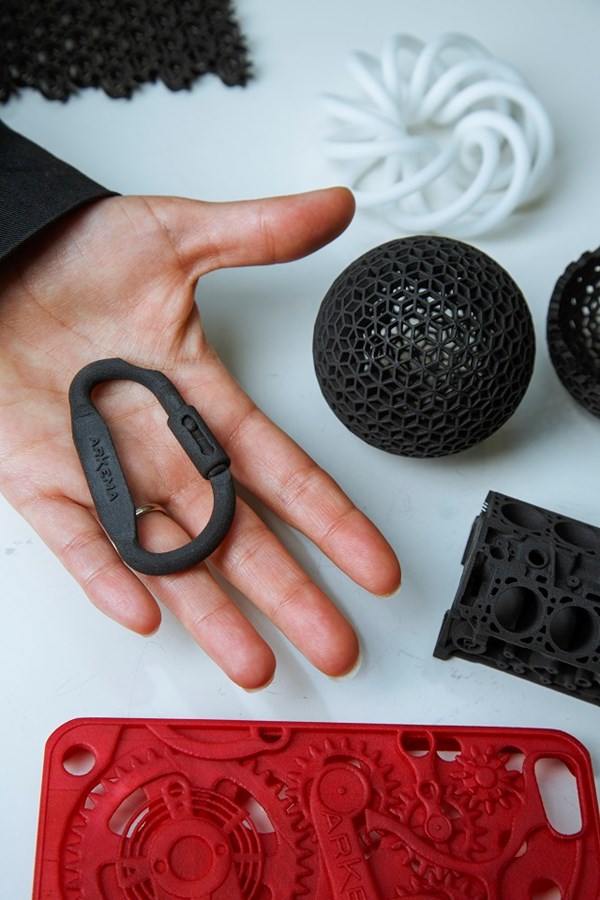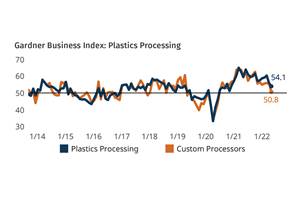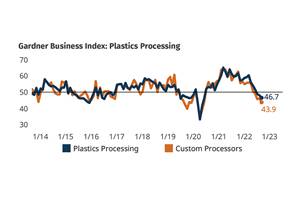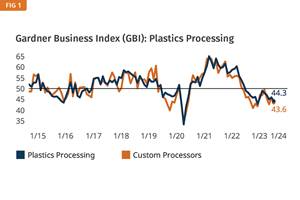One of the First Biobased Nylons Turns 70
Despite its advancing age, an “exciting future” is forecast for Arkema’s Rilsan Nylon 11.

We have been reporting on new bioplastics for the last several years and more recently, I have blogged about new developments unveiled at the SPC Bioplastics Converge conference. We have also reported on the ‘greening’ of engineering thermoplastics—a cover story that appeared in our May 2015 issue.
In that article, I noted that most of the commercial activity has been focused on nylons and polyesters, though some are directed towards higher-end TPEs and TPUs. The nylons appear to have the longest run, though, and I thought it worthwhile to highlight the 70th anniversary of the invention of Arkema’s flagship Rilsan nylon 11 series of high-performance polymers, whose feedstock source is derived 100% from the oil castor bean (pictured at top)—making it among the earliest members of the biobased nylon family of polymers.
And, despite its advancing age, the company sees nothing more than “an exciting future” for these polymers. “Today Rilsan PA11 is known across the globe for being one of the world’s highest performing specialty polymers—the brand has become synonymous with differentiated performance as well as being 100 percent biobased,” says Kevin Hanrahan, chief marketing officer for Arkema’s Technical Polymers. “But the brand came from humble and challenging origins.”
Arkema shared the history of Rilsan nylon 11 in 7 key dates:
● June 1947—First patent, commercialized by a small French firm called Organico.
● 1949—Nylon 11 makes its market debut under the brand name Rilsan; Serquigny plant is built.
● 1950’s—The automaker Citroen is one of the first to grasp the potential of the new plastic, using it to make the fuel lines of the legendary DS.
● 1970—Production begins in the U.S. (Birdsboro, Penn.)
● 1980’s and 1990’s—Rilsan nylon11 becomes the reference for many automotive oil & gas applications.
● 2000’s—3D printing, advanced composites, lightweight sports equipment, and metal replacement are common development themes
● 2013—Production begins in China (Zhangjiagang).
The first commercial batch was made in 1947 in a repurposed spinning mill called ‘La Dame Blanche’ in Serquigny, France. (Gosh, that name is reminiscent of Brando yelling ‘STELLA’ in Tennesse Williams’ Streetcar Named Desire). According to Arkema, these historic first steps were taken during very difficult times.
The desperate conditions of post-World War II forced the original inventors to work under extremely adverse conditions. Each harrowing step of the Rilsan pioneers is richly documented in Arkema’s digital museum.
Arkema also recorded the evolution of the material’s original applications via a series of advertisements and promotions. From humble beginnings in textiles, fibers, brushes and pipes, the polymer quickly gained recognition in specialized applications driven by its early unique set of extreme performance properties.
Rilsan nylon 11’s birthday celebration was officially kicked off at Arkema’s Serquigny production facility and research center on June 10th. Erwoan Pezron, global president for Arkema’s Technical Polymers, reflected not only on the rich legacy of the Rilsan polymer family, but on its exciting future.
“The rapidly evolving world in which we live presents more and more opportunities for continued growth…Rilsan polymers are now produced in all three major regions—Europe, North America, and Asia. And we are ready to meet many of tomorrow’s challenges today—such as lightweight metal replacement for the automotive industry, additive manufacturing (3D printing), and sports equipment that helps athletes break records. The first 70 years have prepared us well.”

Related Content
Plastics Processing Growth Slows Slightly
May reading for plastics processors is, for the most part, a continuation of what we saw in April.
Read MorePlastics Processing Continues to Contract
The September Index signaled a second month of declining activity for plastics processors overall, while custom processors fared even worse.
Read MoreNPE2024 and the Economy: What PLASTICS' Pineda Has to Say
PLASTICS Chief Economist Perc Pineda shares his thoughts on the economic conditions that will shape the industry as we head into NPE2024.
Read MorePlastics Processing Business Index Contracts Further
All components dip as index hits low point of 2023.
Read MoreRead Next
How Polymer Melts in Single-Screw Extruders
Understanding how polymer melts in a single-screw extruder could help you optimize your screw design to eliminate defect-causing solid polymer fragments.
Read MoreUnderstanding Melting in Single-Screw Extruders
You can better visualize the melting process by “flipping” the observation point so that the barrel appears to be turning clockwise around a stationary screw.
Read MoreAdvanced Recycling: Beyond Pyrolysis
Consumer-product brand owners increasingly see advanced chemical recycling as a necessary complement to mechanical recycling if they are to meet ambitious goals for a circular economy in the next decade. Dozens of technology providers are developing new technologies to overcome the limitations of existing pyrolysis methods and to commercialize various alternative approaches to chemical recycling of plastics.
Read More










(1).png;maxWidth=300;quality=90)















